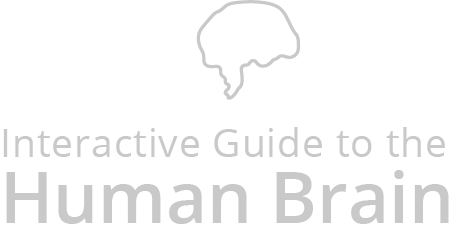
How to Use this Book
Who should use this book?
This introductory guide to the human brain does not assume any prior knowledge about neuroscience. It is primarily intended for students studying courses or subjects in chiropractic, medicine, medical imaging (medical radiography), neuroanatomy, neurophysiology, occupational therapy, osteopathy, physiotherapy (physical therapy), psychology, speech pathology (speech-language pathology), nursing and relevant health studies programs. It will also be useful for educators teaching in those areas and for those conducting research or writing about the brain.
Learning about the brain
In this selective and focused guide, we will help you understand the brain by:
- focusing on ten photos of key areas of the brain, explaining the fundamental components as simply as possible with links to an extensive Glossary and selected case studies for further information;
- translating and explaining key terminology (especially Greek and Latin terms) to allow an understanding of the relationship of the terms to the different parts of the brain;
- allowing knowledge building and self-testing via a hide and reveal tool covering the numbered and highlighted sections of the photos.
Using the guide regularly will increase familiarity and thereby reduce anxiety around understanding the human brain, its components and how they work. This will allow students to overcome the major challenges of brain complexity, medical terminology and location certainty.
Where to start
Fortunately, understanding the human brain is made easy in a number of ways:
- The fundamental plan of the human brain reveals four encompassing parts: the cerebral hemispheres, diencephalon, brainstem and cerebellum.
- The ventricles are simply fluid-filled cavities.
- The white matter connections can be seen as bundles of axons similar to wires in an electrical cable. It has even been alleged that some white matter connections are less complex in humans than in rats.
- Of the twelve cranial nerves, only four are complicated.
- While blood supply to the brain is vitally important (it has been estimated that half of all problems within the brain are due to disruption of its blood supply; Haines 2015), only two (paired) arteries supply all of the blood to the brain.
Understanding terminology and language
A common difficulty with learning about the brain is understanding the language used to label and describe its components. Neuroanatomical terminology is difficult because not only does it have Latin and Greek origins, there can be different names for the same structure, sometimes even in different languages.
In the guide and the glossary entries we will unpack many of these. For example, in examining the cerebrum (Latin) we find it is made up of the cerebral hemispheres plus the diencephalon:
Diencephalon is Greek: dia meaning 'in-between', and when we put this together with enkephalos (also Greek) meaning 'brain', we then know that diencephalon means 'in-between-brain'. This is appropriate because the diencephalon is between the cerebral hemispheres and the brainstem.
Many will already know that 'brainstem' is English (although 'brain' is of Germanic origins) and simply means 'stem of the brain'.
However, while cerebrum (Latin) refers to the two brain hemispheres and the diencephalon, cerebellum (also Latin) is a diminutive (smaller) form of cerebrum and means 'little brain'. This is highly appropriate because, as seen in Image 1, the cerebellum could be mistaken for a little brain attached to the back of a bigger brain.
Within just these few neuroanatomical terms we have a mixture of Latin, Greek and English and potential for confusion. However, as selectively explained in this guide, these terms will become familiar, and with a little time and practice will be understood and become second nature.
Understanding the photographic images
It is far easier to learn about something when we know what it looks like. Even if a particular structure at first resembles a blob, with study and attention we will soon learn where that blob is located and be able to distinguish it from other blobs. Many scientists, doctors and researchers have made rewarding careers from studying the characteristics and features of something that (at first) others consider to be a blob.
As an example, the subthalamic nucleus seen in Image 6 may at first appear to be insignificant and uninteresting and yet it is neither because this nucleus, as a component of the basal ganglia, is the target of deep brain stimulation used to treat Parkinson's disease – a disease that increases in ageing populations and one that the medical profession is examining closely for improved treatments.
Each image will reveal important parts and areas for a student to understand, and the accompanying text will indicate the associated location, structure and function.
Challenges and benefits of this approach
Because of our selective, targeted photographic approach, there is a challenge in ensuring sufficient coverage of brain systems and components that are distributed over a number of regions.
In general we discuss the major systems and components only once, with the image in which they appear. This is varied in some cases: for example, the basal ganglia where three of its five structures are visible in and discussed with Image 5, while the subthalamic nucleus appears in and is discussed with Image 6, and the substantia nigra (another component of the basal ganglia) appears again in Image 10 and is discussed there.
Similarly, discussion of the limbic system, consisting of the amygdala, hippocampus, parahippocampal gyrus and cingulate gyrus, is spread across Images 5, 6 and 7.
While acknowledging these limitations, we believe this targeted visual approach combined with a reasonably plain English discussion is well suited to students who are new to neuroscience, enabling them to more easily understand the physical relationship between structures making up the brain. This structural relationship often has implications for the way individual components of a system work together, such as is the case with the basal ganglia.
We hope many readers will benefit from this informed and careful approach, and go on to build, research and share even greater knowledge about the human brain.


